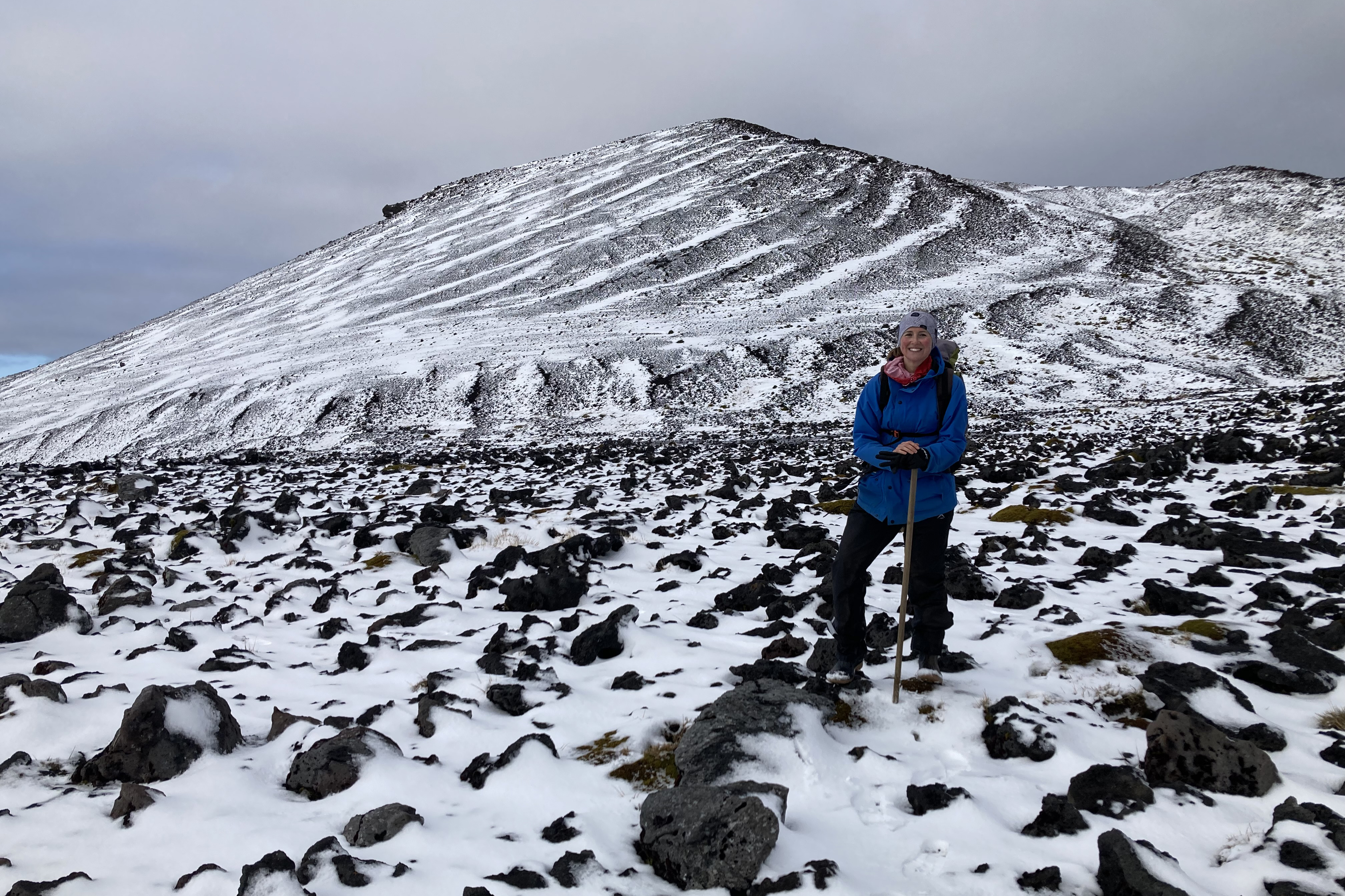05 August 2022
|
Story Leonie Bolleurs
|
Photo Supplied
 For the first time in her life, Marike Stander accompanied a group of researchers for their annual relief expedition with the SA Agulhas II from Cape Town to Marion Island, where she assisted with fieldwork and data collection. Here she is pictured at the snow-covered Karookop.
For the first time in her life, Marike Stander accompanied a group of researchers for their annual relief expedition with the SA Agulhas II from Cape Town to Marion Island, where she assisted with fieldwork and data collection. Here she is pictured at the snow-covered Karookop.
The Prince Edward Islands are the most southerly part of South Africa’s official territory and consist of Marion Island and Prince Edward Island. On Marion Island, about 270 km² in size and situated in the sub-Antarctic Indian Ocean, 1 920 km from the South African shore, activities are restricted to research and conservation management.
This is where
Marike Stander, Lecturer in the
Department of Geography at the University of the Free State (UFS), was granted the opportunity to assist a research group led by Prof Werner Nel (University of Fort Hare) and Prof David Hedding (Unisa) – based on her knowledge and experience in tracer sampling.
Back home, Stander is working to complete her doctoral research, investigating the often-overlooked major issue of soil erosion. She believes the management of soil erosion, a global issue, is key. According to her, it impacts the storage of carbon and nutrients, and therefore the production of food, but it can also act as a pollutant in water sources.
Fieldwork and data collection
With the support of the
UFS Faculty of Natural and Agricultural Sciences and the Department of Geography, she was released to accompany the research group for the first time in her life on their annual relief expedition with the SA Agulhas II from Cape Town to Marion Island, where she assisted with fieldwork and data collection. During this three-week field campaign, Stander collected sediment samples for the tracer project, as well as rock and peat samples.
With the SANAP-LCI group collaborating with research labs in the United Kingdom and France, she was able to bring her expertise to the table, while at the same time learning about other geochronological techniques and field methods.
She was also excited about the exposure to the work of a myriad of researchers in various fields from around the world. Stander says in a time when the importance of interdisciplinary and multidisciplinary work is being emphasised, it was invaluable to meet and learn from various distinguished scientists. “It changes your perspective and allows your mind to not only think outside the box, but also to think about all the interconnected boxes and how they affect each other.”
She believes being exposed to various sampling strategies from different scientists also broaden one’s skill set and experience. “Using your capabilities and skills in a different setting builds depth to your skill set and expands your horizon.”
Volcanoes and albatrosses
Very few people get the opportunity to visit Marion Island. Thus, just the chance to visit and experience life on the island is described by many as one of their most memorable events. Always fascinated by volcanic features, Stander was completely captivated by this relatively young volcanic island. “There are so many interesting features, such as the pahoehoe and a’a lava flows, as well as the numerous scoria cones,” describes Stander, who cannot believe that she managed to cover the vast distances in gumboots, the only footwear that are effective to cross anything – from razor-sharp rocks to deep waterlogged mires.
She was also overwhelmed by the flora and fauna on the island. “It is so very different from what we are used to and from what I’ve experienced before. Seeing these animals in a relatively untouched remote location really captivated me,” she says.
“More specifically, I fell in love with the albatrosses. These remarkable seabirds cover vast distances over the ocean looking for food. They are unfortunately threatened by the invasive mice on Marion Island.” Stander invites people to help organisations such as Mouse-Free Marion to take on the difficult task of eradicating these mice. Find them at www.mousefreemarion.org.
On a lighter note, Stander also learnt a thing or two that was totally new to her. For instance, that there are radio telescopes installed on the radio-quiet Marion Island, searching for the universe’s first stars. And that male elephant seals that drive out all other male competitors during mating season are called ‘beachmasters’. She learned that these ‘beachmaster’ bulls have a harem of female elephant seals and can weight up to three tons.
• She wishes to thank Prof Werner Nel, Prof David Hedding, and Dr Liezel Rudolph (UFS) from the SANAP-LCI project for affording her the opportunity to join the expedition. She also thanks the SANAP-NRF and the Department of Forestry, Fisheries, and the Environment for making the expedition possible.